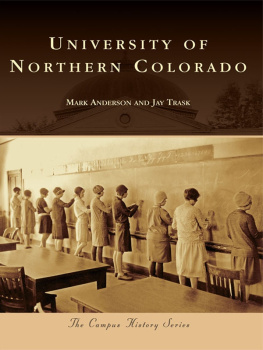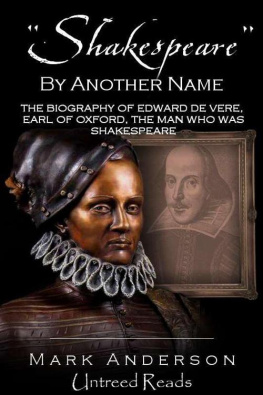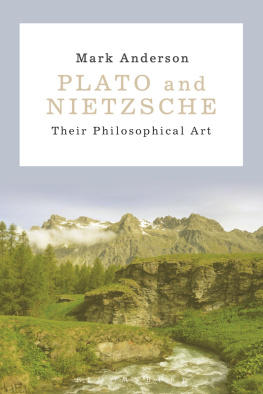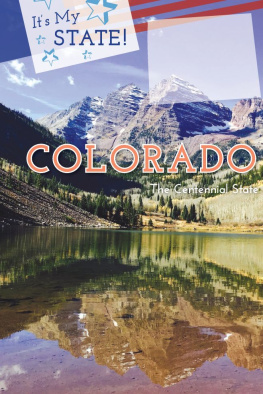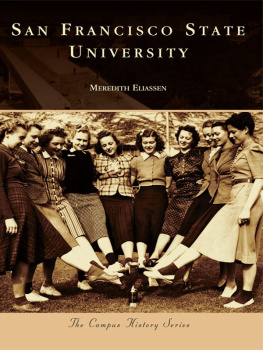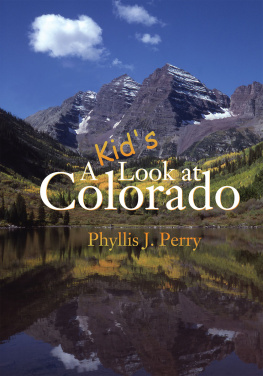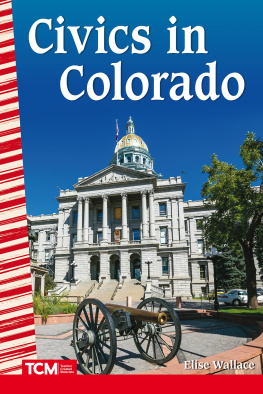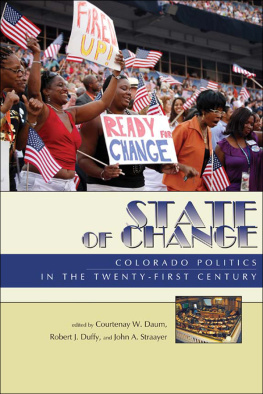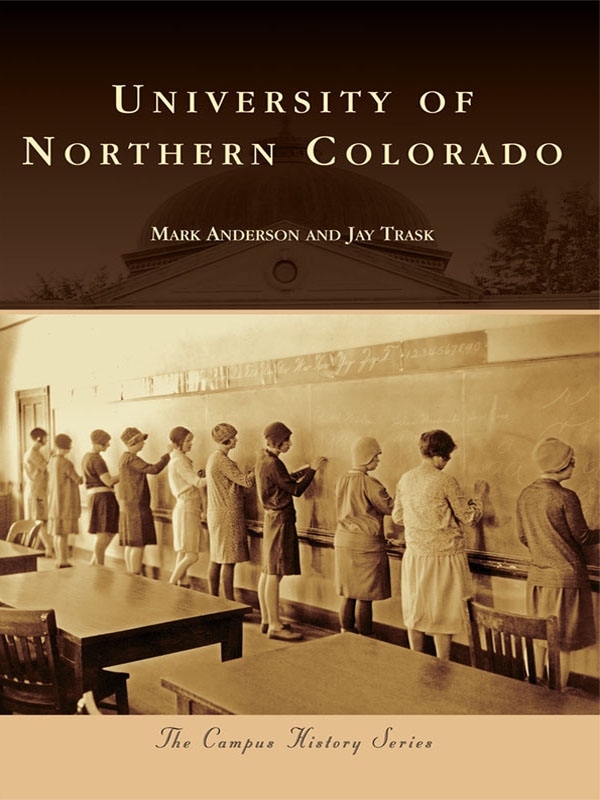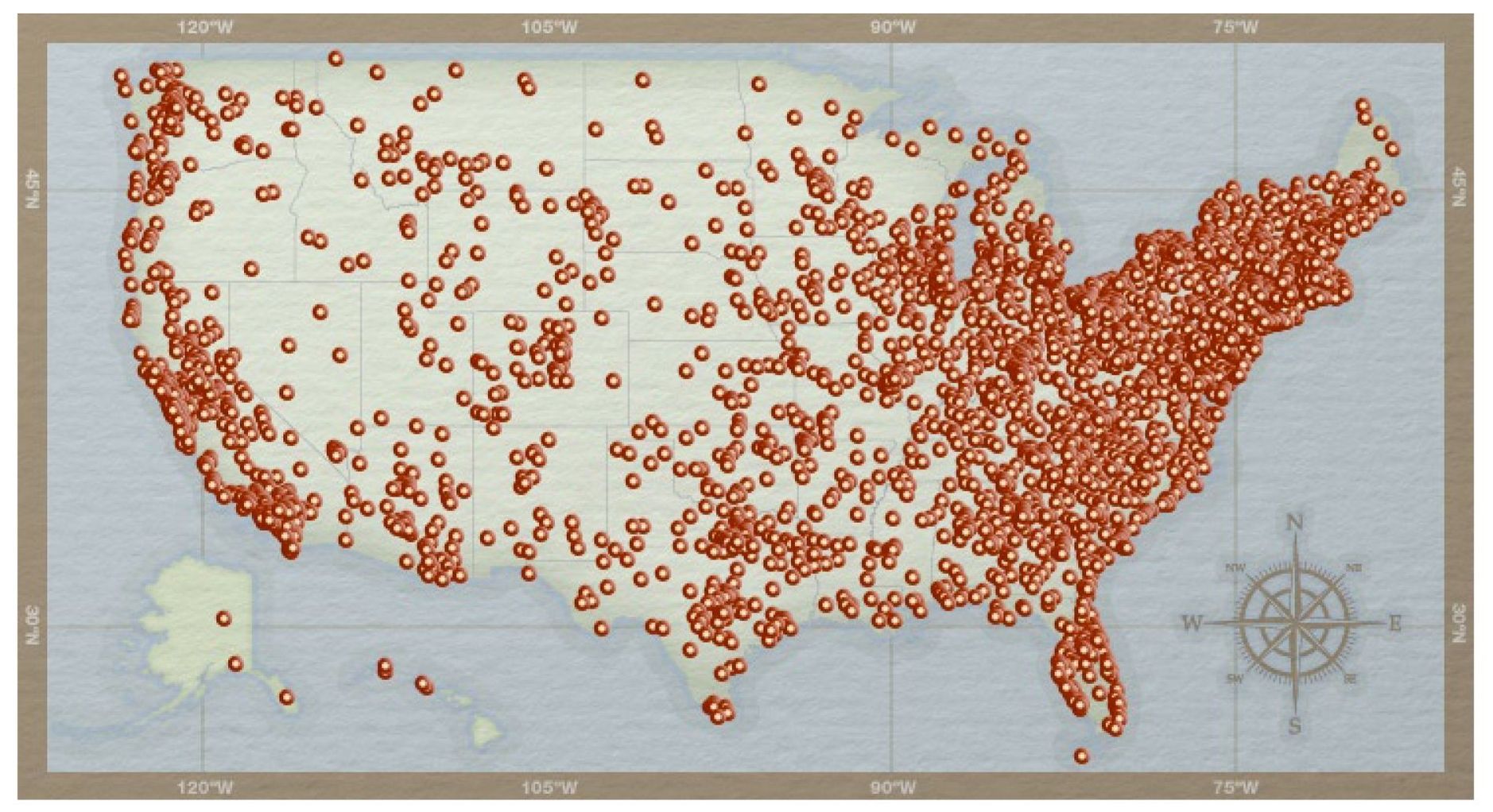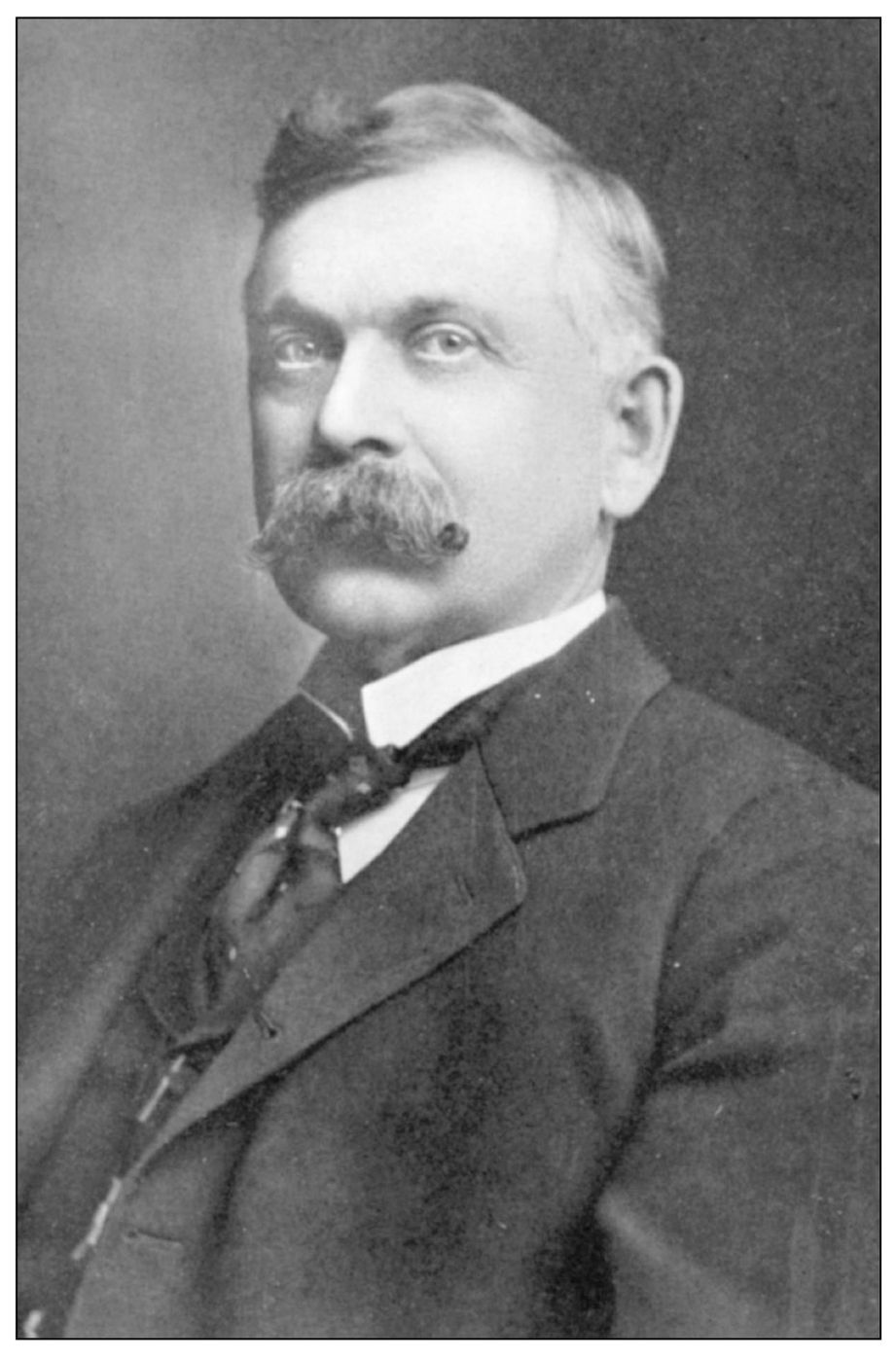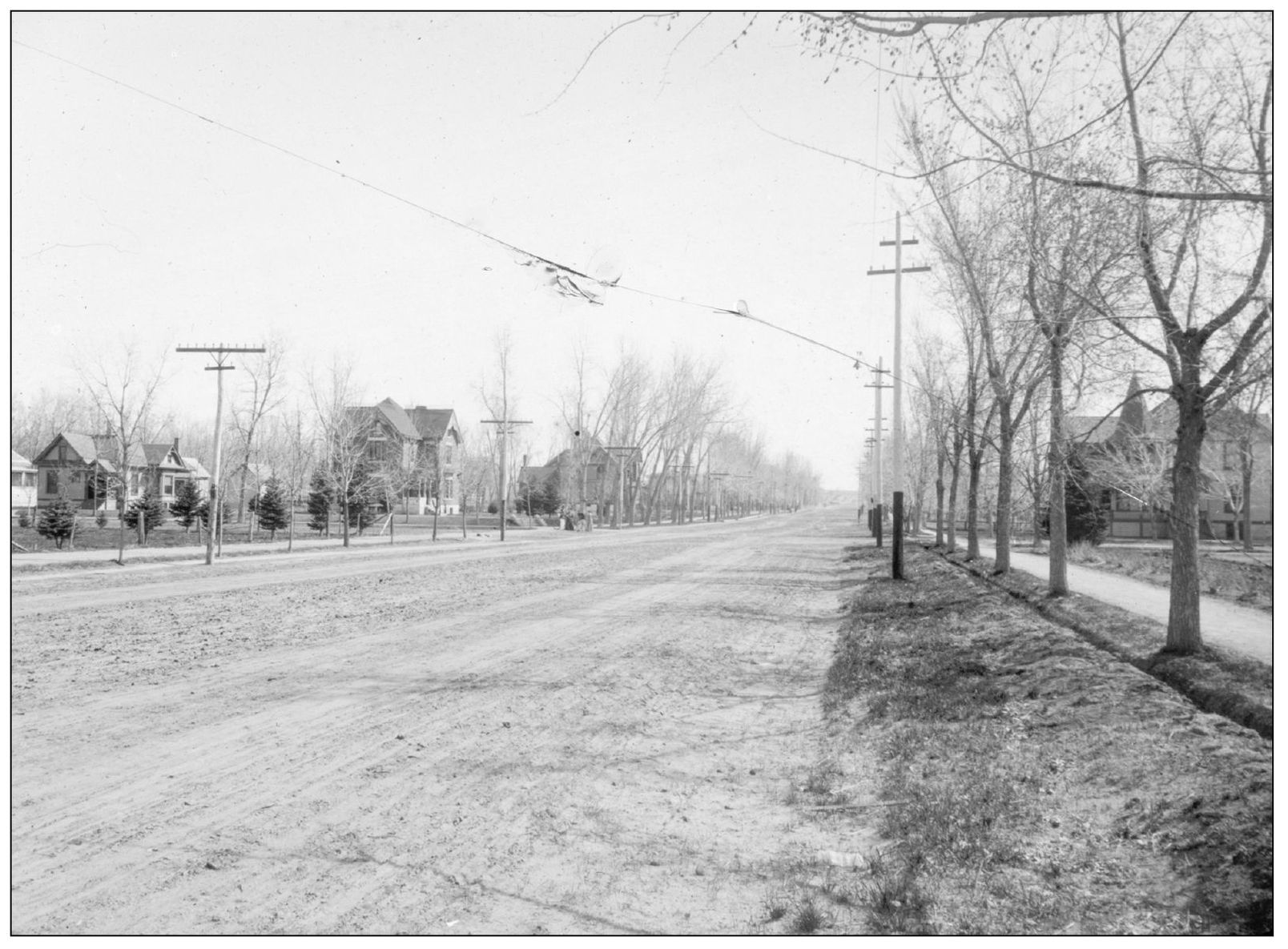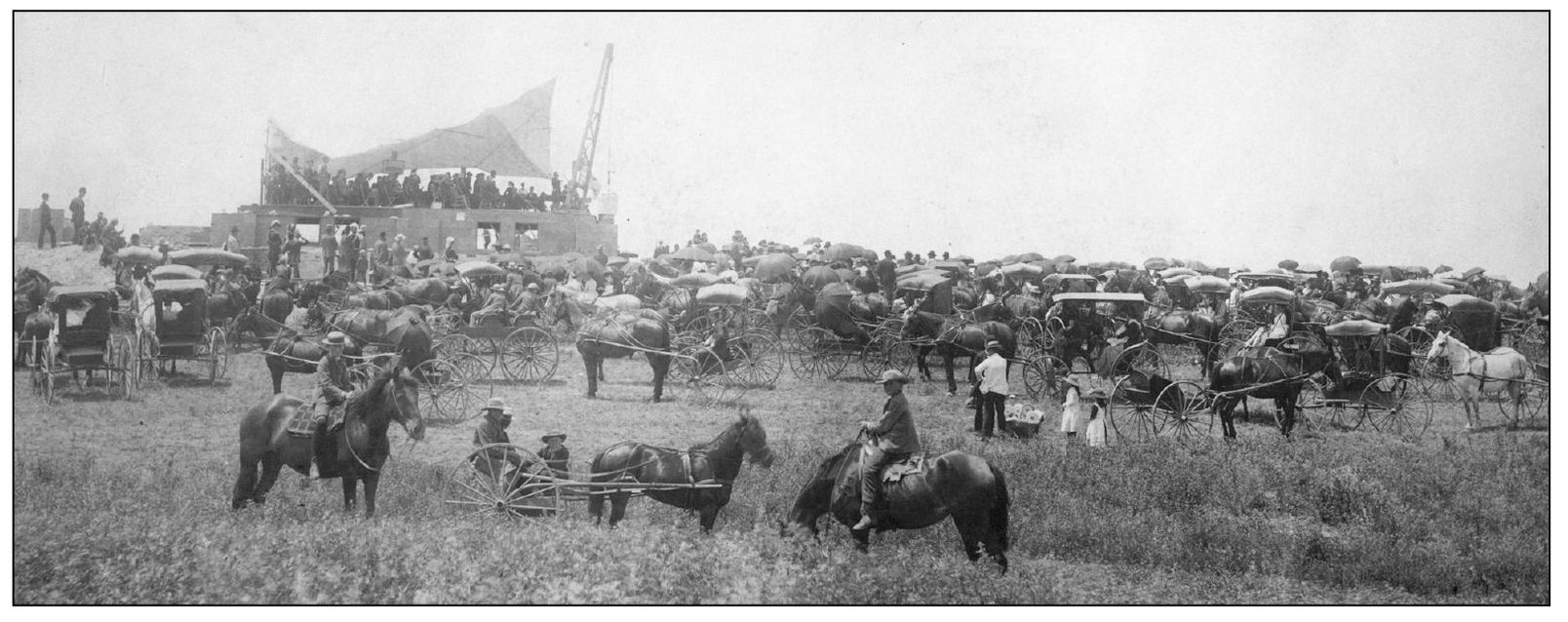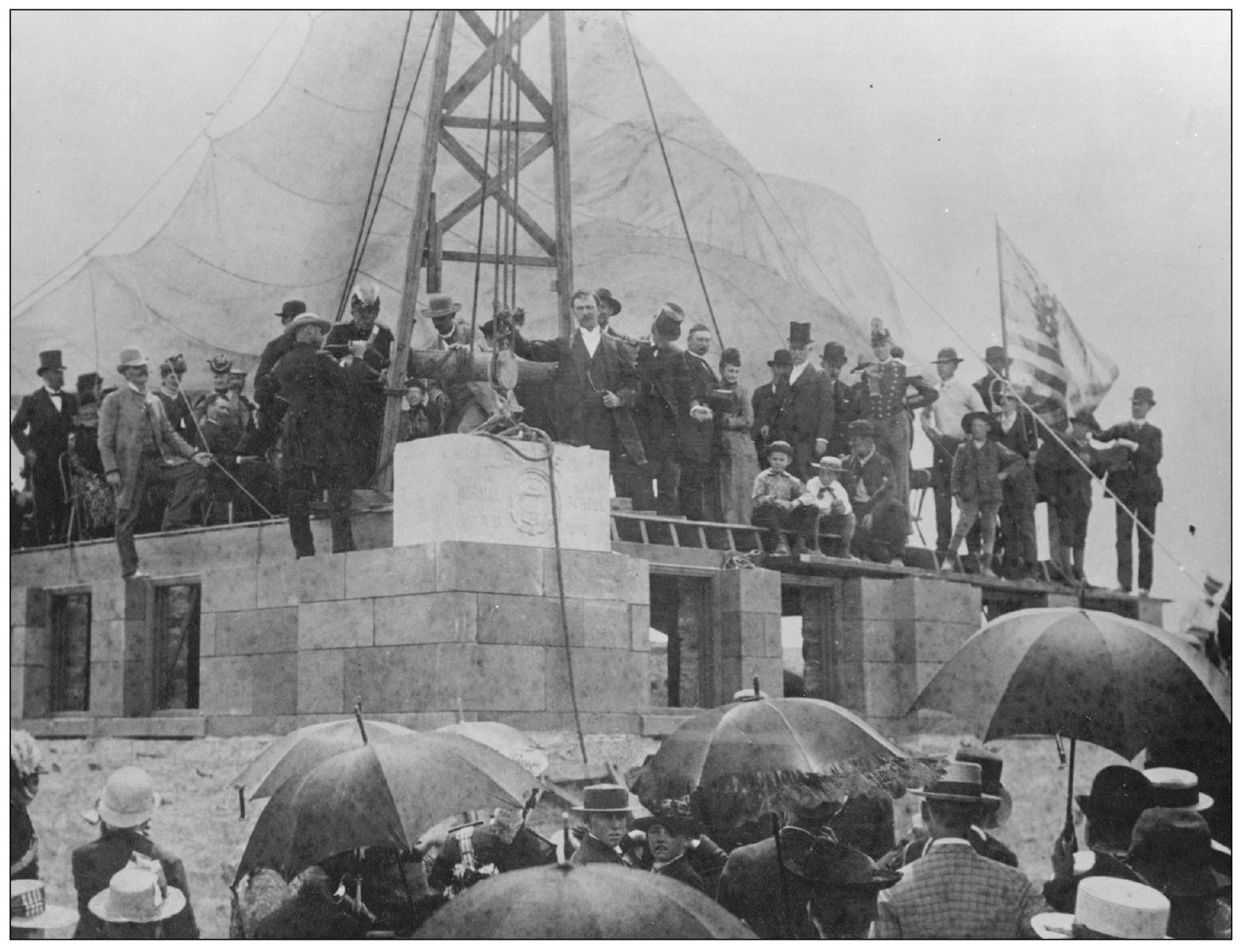ACKNOWLEDGMENTS
The authors are grateful for the support of many people without whose interest and assistance this project would not have been possible. Dr. Gary Pitkin, dean of the university libraries, associate dean Helen Reed and head of library administrative services Joan Lamborn were enthusiastic and encouraging. Shirley Soenksen, Eve Measner, and Kay Lowell of the university archives provided valuable assistance and expertise. Thanks also to the rest of the university libraries faculty and staff who covered for us in our absences as we gathered images and researched their significance.
The primary sources of information that informed the captions are the following:
Albert Carter. Forty Years of the Colorado State Teachers College Formerly the State Normal School of Colorado 18901930. Colorado State Teachers College. 1930.
Robert Larson. Shaping Educational Change: the First Century of the University of Northern Colorado at Greeley. Colorado Associated University Press. 1989.
William R. Ross. The Four Seasons of William R. Ross. 1980. Unpublished manuscript in the University Archives.
Robert C. Dickerson. The University of Northern Colorado. A Legacy of Promise. Newcomen Society of the United States 1989.
The Mirror , the Cache la Poudre , the Colorado State Normal School and the Colorado State Teachers College Bulletins and the Crucible .
Most frustrating was that space considerations prevented us from recognizing the contributions of all students, faculty, and administrators who have significantly shaped the educational environment of the University of Northern Colorado in its first hundred years. We are especially sorry that we were unable to provide space or images to celebrate the accomplishments of certain nationally recognized scholars whose research has enhanced our academic reputation, such as Paul McKee, Earl Rugg, and Ethan Allen Cross. Although we tried to maximize the number of images of students in their academic and social activities, space requirement prevented mention of all the varied and fascinating academic, athletic, and social organizations that have contributed to our students educational experience. Another source of frustration was the fact that certain images in our collection, which would have been valuable additions, could not be formatted appropriately for this project.
All images are courtesy of the UNC University Libraries Archival Services Department.
Find more books like this at
www.imagesofamerica.com
Search for your hometown history, your old
stomping grounds, and even your favorite sports team.
One
COLORADO STATE NORMAL SCHOOL
State senator James McCreery sponsored Colorado Senate Bill 104 in the 1889 state legislature, which said, in part, A State Normal School is hereby established at or near the city of Greeley ... the purpose of which shall be the instruction in the science and art of teaching, with the aid of a suitable practice department ... PROVIDED, that a donation shall be made of a site ... consisting of forty acres of land. The McCreery bill excited a considerable amount of controversy. Opponents argued that the Normal Department at the University of Colorado at Boulder was sufficient to fill the growing state demand for qualified teachers. However, after overcoming a senate filibuster and a negative house committee report, Colorado Senate Bill 104 was finally passed and signed into law by Gov. Job A. Cooper on April 1, 1889.
Thomas Gray was recruited by the first board of trustees to serve as the first principal of the state normal school. The title president was not considered appropriate because a normal school education did not have the same academic status as a college education. A native of Wisconsin, Dr. Gray was well qualified for this position, having been president of the St. Cloud, Minnesota, Normal School and state director of the National Education Association of Minnesota.
The first day of classes was October 6, 1890. The proposed Normal Building being under construction, administrative offices were housed in the Weld County Courthouse (pictured above). Classes were held in the Opera House, in the various downtown churches, and in a storeroom above a paint store on Ninth Street between Seventh and Eighth Avenues. Classes were taught by principal Gray assisted by a four-member faculty: Paul Hanus (pedagogy), Margaret Morris (history), Mary Reid (mathematics and geography), and John R. Whitman (music).
A commencement ceremony for the 12-member class of 1891 was held on June 3, 1891. Two days later, principal Grays resignation was announced by the Greeley Tribune.
John P. Cranford, a New York banker and friend of Greeleys founder, contributed 21 of the 40 acres required for the school buildings and grounds. Mr. Cranfords donation, on a hill a mile south of Greeley, which was known to the locals at the time as Rattlesnake Hill, was immediately renamed Normal Hill. This picture shows Normal Avenue from downtown Greeley south up to Normal Hill very much like it would have looked to Greeley residents in 1891.
Friday, June 13, 1891, was the date set for the cornerstone laying ceremony for the new normal school building. Morning trains brought over 600 distinguished guests to attend the ceremony, including Gov. Job A. Cooper and Lt. Gov. William G. Smith. The party paraded from downtown Greeley, up Normal Avenue, to the school grounds. The cornerstone itself had been donated by J. M. Wallace, president of the First National Bank of Greeley and also president of the board of trustees.
Senator McCreery made the first speech, acknowledging that the successful teacher must have a scientific knowledge and expert skill in the management of his little community ... these branches of inquiry are essentially professional and ... can only be generally acquired in the professional school for teachers. Governor Cooper concurred. When we compare the school maam of our boyhood, he orated, with the wide awake, practical, keen sighted and thoroughly trained teacher of today we see what normal institutions are doing.

